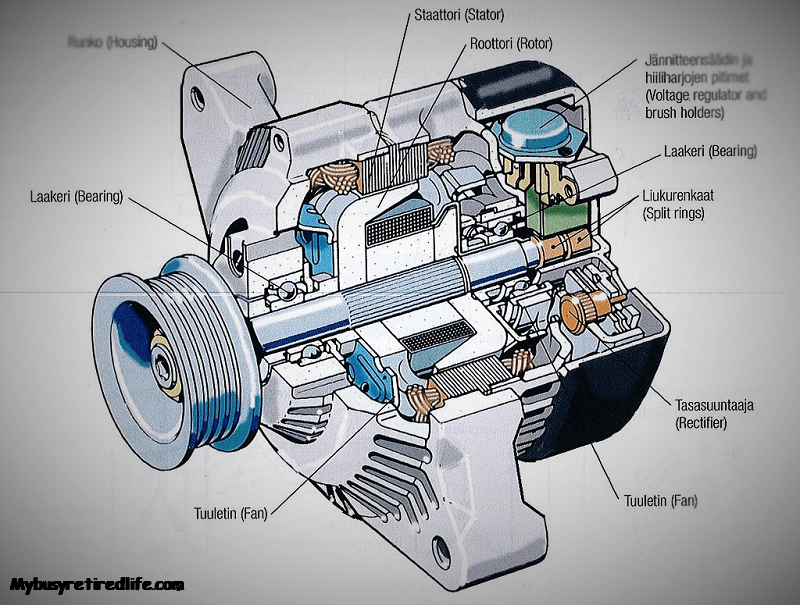
An alternator is an essential component of a vehicle's electrical system. It is responsible for generating electricity that powers various electrical components in the car, such as lights, radio, and air conditioning. The alternator works by converting mechanical energy into electrical energy.
Construction of an Alternator
An alternator consists of several components, including a rotor, stator, rectifier, and voltage regulator. The rotor is a magnet that rotates inside the stator, which is a set of coils that surround the rotor. The rectifier converts the alternating current (AC) generated by the alternator into direct current (DC), which is used to power the electrical components in the car. The voltage regulator regulates the output voltage of the alternator to ensure that it remains within a safe range.
Working of an Alternator

When the engine of the car is running, the alternator is rotated by a belt connected to the engine's crankshaft. As the rotor rotates inside the stator, it generates an AC voltage in the stator coils. This AC voltage is then rectified by the rectifier, which converts it into DC voltage. The voltage regulator then regulates the DC voltage to ensure that it remains within a safe range.
Types of Alternators

There are two types of alternators: AC alternators and DC alternators. AC alternators generate AC voltage that is rectified by the rectifier to produce DC voltage. DC alternators, on the other hand, generate DC voltage directly.
Signs of a Failing Alternator

There are several signs that indicate a failing alternator, including dimming headlights, a dead battery, unusual noises coming from the alternator, and a warning light on the dashboard. If you notice any of these signs, it is essential to get your alternator checked as soon as possible.
Maintenance of an Alternator

Regular maintenance of your alternator is crucial to ensure that it functions properly and lasts longer. Some of the maintenance tasks include checking the belt tension, cleaning the alternator, and checking the battery's condition.
Conclusion
An alternator is an essential component of a car's electrical system, and it is responsible for generating electricity that powers various electrical components. Understanding how an alternator works, its construction, types, signs of failure, and maintenance is crucial to keep your car running smoothly and safely. If you notice any signs of a failing alternator, it is essential to get it checked by a professional mechanic as soon as possible.